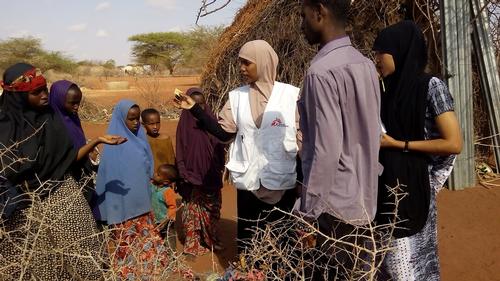As the world leaders representing the 193 UN Member States, including Kenya, will be adopting the Sustainable Development Goals (SDGs) to tackle global issues including health for the next 15 years at a special Summit in New York this week, Médecins Sans Frontières (MSF) would like to call for concerted efforts in addressing the glaring gaps in current health needs and trends in reduced political and financial support for health. It is important that the SDGs, while laudable, be rooted in the reality faced by the people and that tangible plans addressing this disparity are developed post the Summit.
The 17 SDGs – with the motto "Leave No One Behind” – will replace the Millennium Development Goals (MDGs) and form the blueprint for strategic plans of national governments, international institutions and funders in the coming years.
Undoubtedly, the MDGs led to marked improvements. In Kenya to mention few examples, an increase in vaccination coverage, access to primary health care and the health workforce did happen. Yet, MSF while working along with the government and communities since 1996 still observe that the medical needs among the vulnerable population, including inhabitants of informal settlements, refugee camps, communities affected by epidemics and conflicts, people living with HIV/AIDS, tuberculosis (TB) and survivors of sexual violence, remain dire.
Significant gaps in health provision continue to destroy lives and cripple communities in Kenya. Affordability is a concern in many areas of care, from the most basic to the more specialized as people with non-communicable diseases still have limited care. Secondary health care is too expensive for most people. Spread of water-borne diseases is still difficult to control as we see with the ongoing cholera epidemic.
Response to HIV which is seen as the clear success of MDGs also has mixed achievements. Globally, as a result of strong political commitment, an increase in funding for HIV testing and treatment, increased awareness, innovative service delivery models and continued decline in the prices for antiretroviral drugs and diagnostic, the target of HIV treatment for 15 million people by 2015, was achieved. However, this progress is still fragile. In Kenya, only half of the estimated 1.6 million people living with HIV are being treated. Presently, international donors, paying for drugs, staff salaries and community-based services, fund 70% of the country’s HIV budget. Worryingly, the donor funding is expected to reduce over the coming years bringing expectations of a greater reliance on domestic resources.
With the Government of Kenya merely allocating 4.5% of its national budget on health, the test will be to see if it will prioritize the urgent medical needs of the population, especially of vulnerable communities, and, if so, whether the health budget will be scaled up to meet the goals set out in the SDGs. There is fear that the gap in health provisions may widen further considering recent trend of global decrease in international funding and SDGs calling for more self-reliance of countries. This problem could worsen for Kenya given its recent economic upgrade to a Lower-Middle-Income country, which means that its future eligibility for international grants may be jeopardized considerably.
In order to stand a better chance to achieve the SDG targets by 2030, domestic resources for health financing need to substantially increase while policies need to be formulated based on realistic assessments of obstacles that people face in getting access to health care.
Now is the opportunity for Kenya and stakeholders to show political will and leadership by consolidating and accelerating the improvements in health over the past decade. While keeping the SDGs in mind, the government needs to swiftly act to increase financing for health and develop tangible plans based on the health needs of its most vulnerable and excluded communities.




